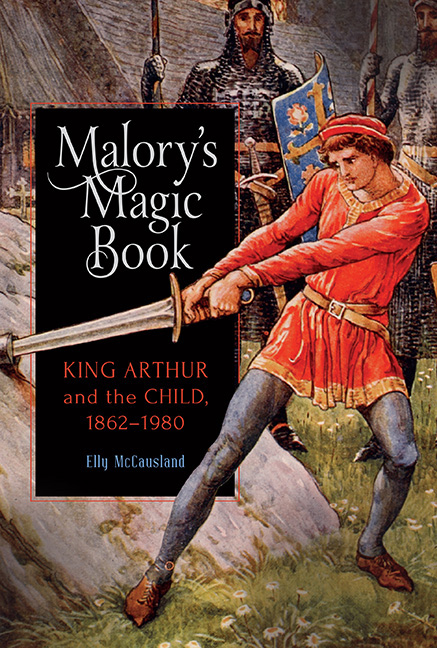Book contents
- Frontmatter
- Dedication
- Contents
- List of illustrations
- Acknowledgements
- A note on names
- Introduction
- 1 ‘Ever fresh and fascinating to the boy and girl of today’: the timeless child and the childish medieval in nineteenth-century Arthuriana
- 2 Risk and revenue: adventurous Arthurian masculinities in the work of Howard Pyle and Henry Gilbert
- 3 The ill-made adult and the mother's curse: psychoanalysing the Arthurian child in T. H. White's The Once and Future King
- 4 ‘Monty Python was not that far away’: the instability of 1950s Arthuriana for children
- 5 ‘For a little while a magician’: potent childish fantasies in John Steinbeck's Acts of King Arthur and his Noble Knights
- Conclusion: At the crossing-places
- Bibliography
- Index
- Arthurian Studies
1 - ‘Ever fresh and fascinating to the boy and girl of today’: the timeless child and the childish medieval in nineteenth-century Arthuriana
Published online by Cambridge University Press: 04 April 2019
- Frontmatter
- Dedication
- Contents
- List of illustrations
- Acknowledgements
- A note on names
- Introduction
- 1 ‘Ever fresh and fascinating to the boy and girl of today’: the timeless child and the childish medieval in nineteenth-century Arthuriana
- 2 Risk and revenue: adventurous Arthurian masculinities in the work of Howard Pyle and Henry Gilbert
- 3 The ill-made adult and the mother's curse: psychoanalysing the Arthurian child in T. H. White's The Once and Future King
- 4 ‘Monty Python was not that far away’: the instability of 1950s Arthuriana for children
- 5 ‘For a little while a magician’: potent childish fantasies in John Steinbeck's Acts of King Arthur and his Noble Knights
- Conclusion: At the crossing-places
- Bibliography
- Index
- Arthurian Studies
Summary
In 1862, the architect and literary editor James Thomas Knowles published a version of Thomas Malory's Morte Darthur for children: The Story of King Arthur and his Knights of the Round Table. The first of its kind, Knowles's book was inspired by the then recent publication of Tennyson's Idylls of the King, and dedicated to the poet ‘as a tribute of the sincerest and warmest respect’. Tennyson approved of Knowles's endeavour, and the two became close friends, with Knowles claiming at one point that Tennyson had said, ‘I know more about Arthur than any man in England, and I think you know next most.’ In his preface, Knowles noted that the Morte had ‘never been modernised or adapted for general circulation’, but that boys ‘would probably become the principal readers of the Arthur legends in a popular form’, eager to ‘devour its tales of adventure and daring and magic and conquest’. As testament to this apparently fundamental link between the Morte Darthur and the boy reader, Knowles cited the example of the poet Robert Southey, who recalled, ‘when I was a schoolboy I possessed a wretchedly imperfect copy of it, and there was no book except the “Fairy Queen” which I pressed so often or with such deep contentment’. The need to restore Malory to his rightful place among boy readers was apparently pressing: following the success of Tennyson's Idylls, Knowles claimed, ‘an outline of the noble story has almost become a necessary item of general information’. Knowles intended his book to fill this gap, to become ‘the introductory popular reading book on King Arthur – the Primer of the subject’ for a young audience. Underpinning this endeavour were anxieties about the moral influence of Malory's tale upon the impressionable young minds of the nineteenth century. An accessible version of the legend was necessary, Knowles claimed, ‘lest any part neglected should fall to baser meanings in unworthier hands’. Done properly, he predicted, the regeneration of Arthur would put down ‘the pandering cry of Art for Art's sake’, replacing it with ‘Art for Man's sake’, and bring Arthur back ‘to be a true King and Power among men’.
- Type
- Chapter
- Information
- Malory's Magic BookKing Arthur and the Child, 1862–1980, pp. 17 - 52Publisher: Boydell & BrewerPrint publication year: 2019

